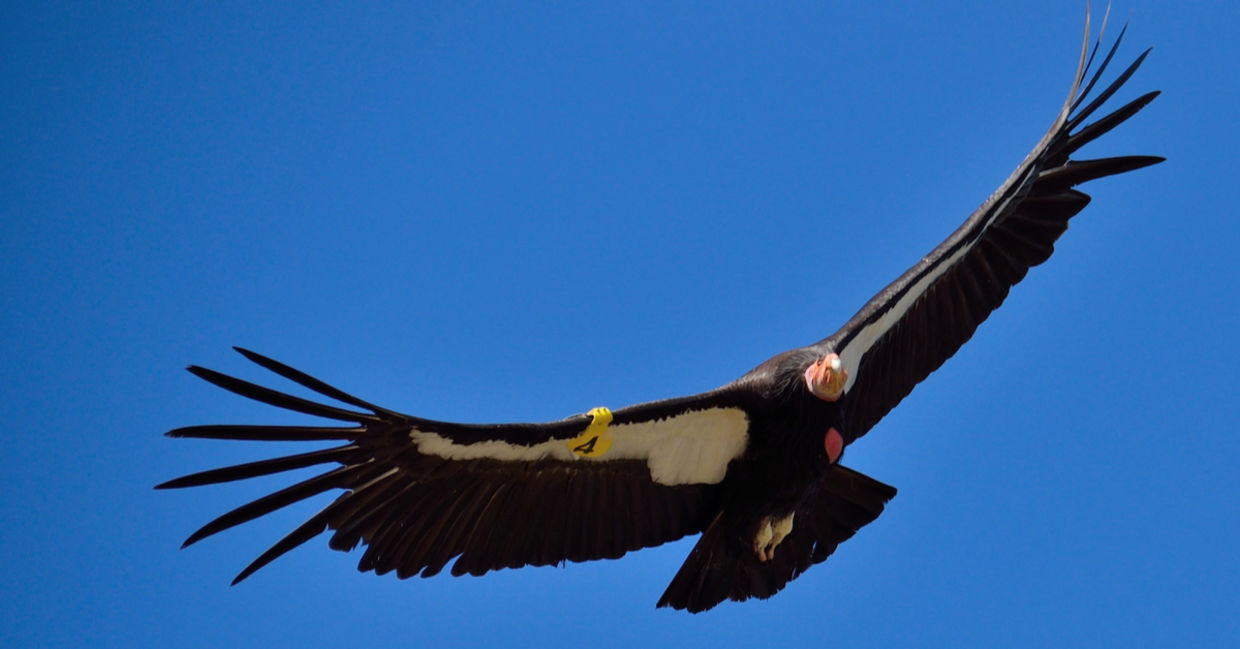
Andriy Blokhin / Shutterstock.com
Native to the southwestern United States, the California condor (Gymnogyps californianus) is one of the rarest birds in the world. With a massive wingspan of up to 9.5 feet, the bird is a beloved symbol of the Golden State.
But the condor has also come to represent the state’s woes, as poaching, loss of habitat, and environmental pollution have led to the species becoming critically endangered in the wild. Fortunately, a breeding program at the Oregon Zoo has made huge strides in reviving the native condor population. In a one month period between January and February 2021, nine condor eggs were laid at the zoo, marking a record amount in the zoo’s nearly 20 year mission to save the species.
Dr. Kelly Flaminio, the head of the condor repopulation program at the Oregon Zoo, told CNN that the new eggs are cause for celebration. While the species will likely be classified as endangered for years to come, the eggs are a critical step on the road to recovery.
“I can't stress enough how important each individual [egg] is in this program,” Flaminio said. “It's not only about increasing the number of birds we have in total, it's about increasing the number of birds we can get into the wild that reach breeding age so we can have more breeding happening in the wild. That's the key to gaining a sustainable population.” So the ongoing goal, Flaminio adds, is to produce as many chicks as possible every year “to just get that wild population higher and higher.”
Because condors lay just one or two eggs per year, with a long incubation period of 54 to 58 days, the process of restoring their population is slow-going. But the Oregon Zoo utilizes a special method to speed things up.
According to local news outlet KOIN, the zoo encourages a phenomenon called “double clutching” to stimulate egg production. When a condor lays an egg, zoo workers whisk the egg away to an incubator or a surrogate parent. This triggers the condor to lay a second egg. Once the eggs begin to hatch, they are placed back in the nest with their parents.
The zoo’s goal isn’t to simply increase the number of condors in captivity - it aims to release as many condors as possible back into the wild. More than 50 birds born and raised at the Oregon Zoo have been rehomed to protected field pens in the wild. The zoo has also placed eggs laid in captivity into wild nests to hatch.
Since the California condor population reached a record low of just 22 birds in the wild in 1982, the species has bounced back significantly. The National Parks Service credits the birds’ revival to intensive conservation efforts by individuals.
View this post on Instagram
As one of the first animals included in the 1973 Endangered Species Act, the survival of the bird is a testament to the power of human intervention. With some 500 condors now soaring gracefully overhead in the wild, and breeding programs producing more eggs than ever before, the future looks brighter for this majestic bird.
YOU MIGHT ALSO LIKE:
White-Tailed Eagles Soar Over England After 240 Years
Paradise Park Zookeepers are Quarantining With the Animals!







